What If…? Conference & Book 🤔
Active curiosity to the max
In 2010, I cofounded a conference that used curiosity to inspire and provoke attendees into action. I ran the production side of the company, ensuring design and quality. A multifaceted company, we created conferences, workshops, independent conferences, and a book. We helped 1,000s of people solve problems by teaching them how to ask better, more radical questions.
Cofounder & Chief Curiosity Curator
November 2010 - June 2014
Our startup, What If...? LLC
Cofounder Matt Murrie and many others along the way

Contents
Problem
In everyday life, it’s easy to fall into thinking ruts. Collectively we understand that curiosity is what drives humanity forward. We ask questions, find answers, and innovate. But, it can be hard to take the time to see if you’re asking the right questions and talking to the right people.
What If…?, as a company, actively drives participants to explore beyond their ruts through an annual conference, workshops, independent conferences, and our children’s book.
Solution
Democratize critical thinking and question asking through active curiosity.
Our promotional explanation video.
We helped 1,000s of people solve problems by teaching them how to ask better, more radical questions. Our solution was to create a company that focused on active curiosity (being curious and doing something about it).

Our primary product was an annual conference + workshop and a book for 8-12 year olds. We also created a platform for independent conferences, facilitated workshops, and almost made a makerspace. We brought together different groups of people to have conversations starting with questions.


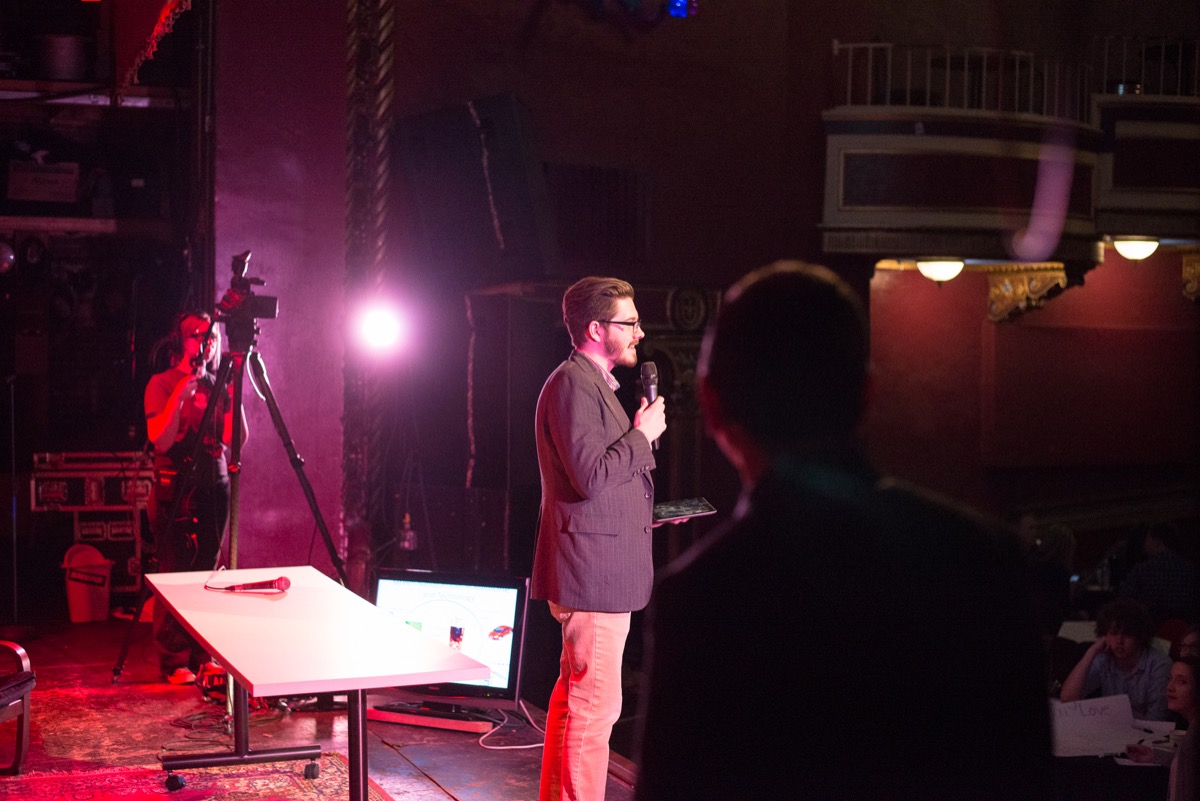




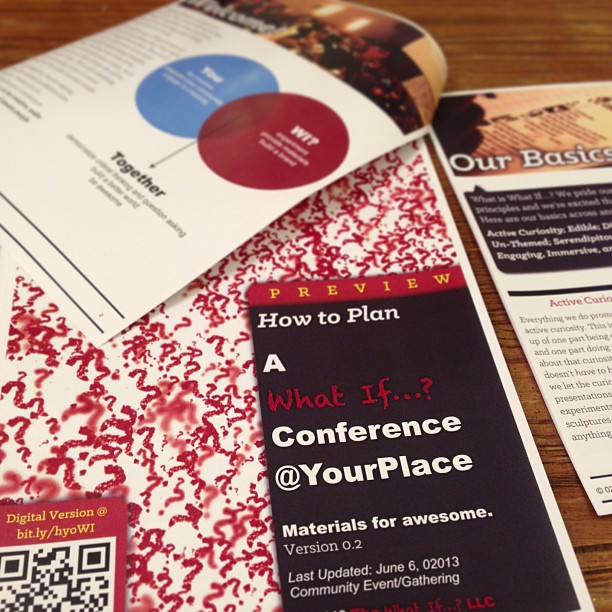

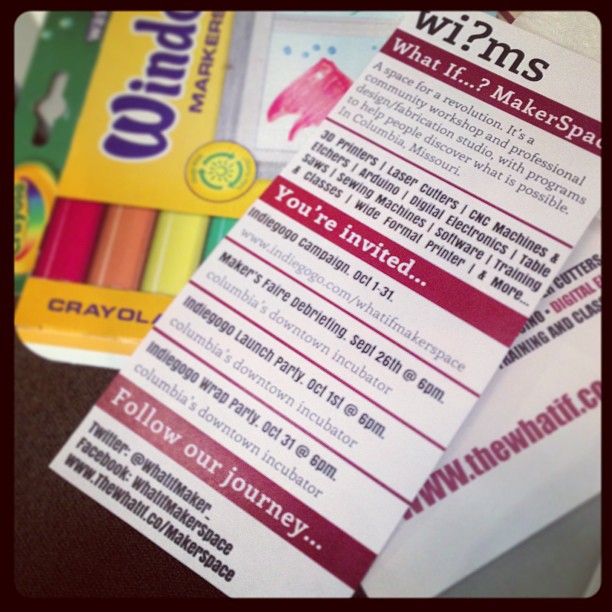
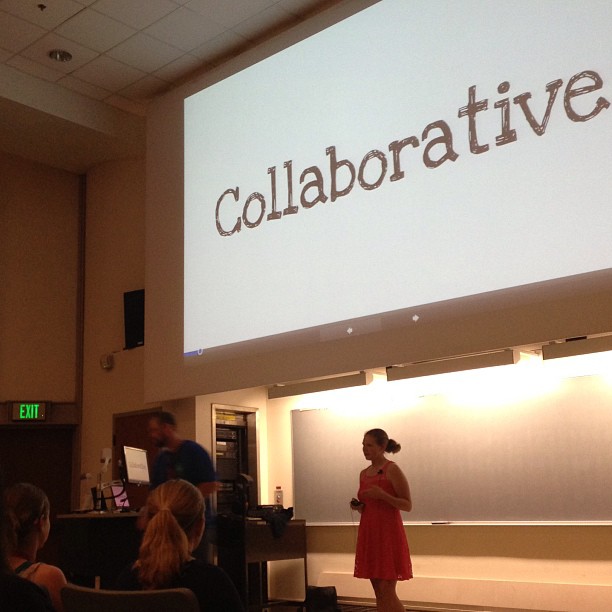

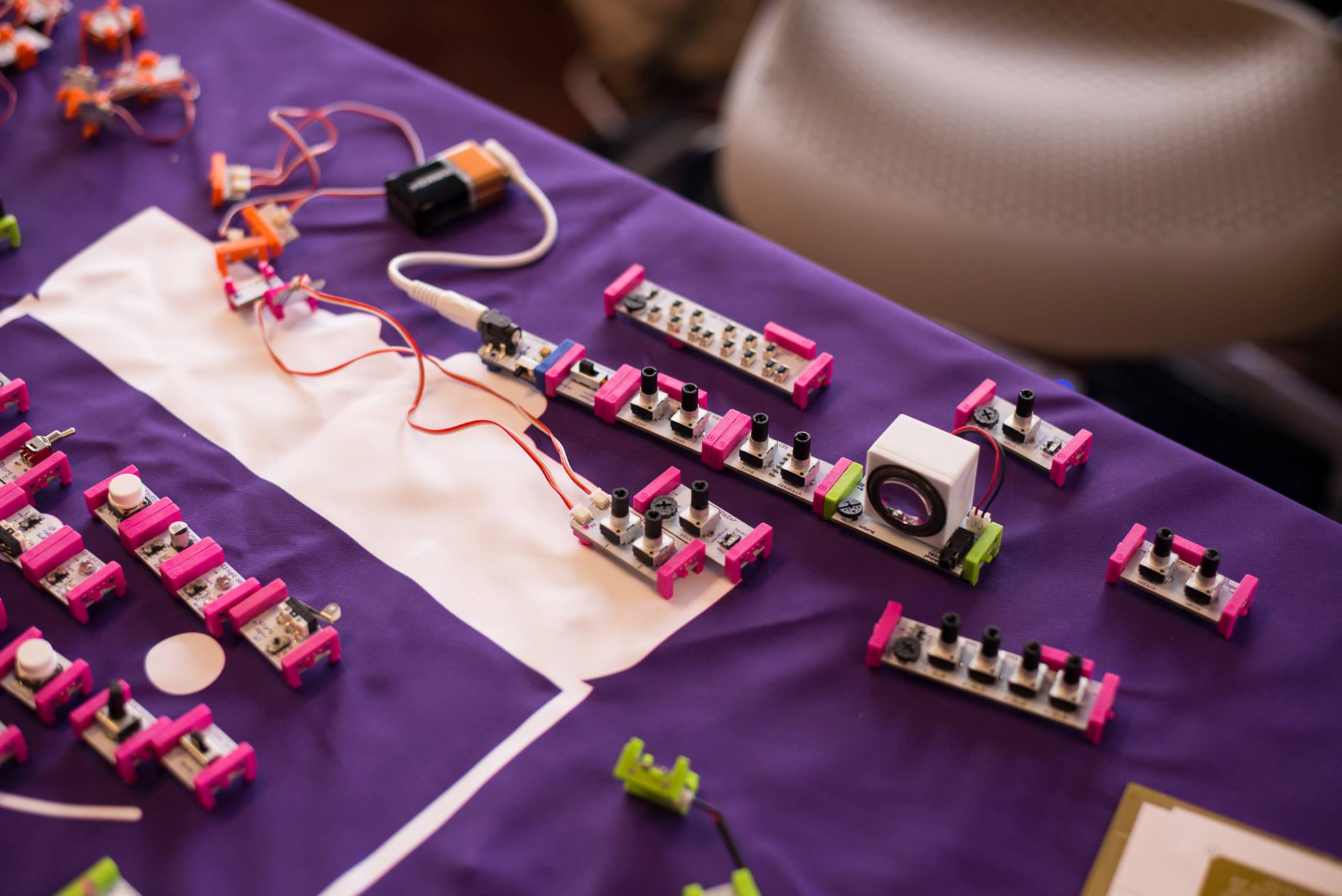
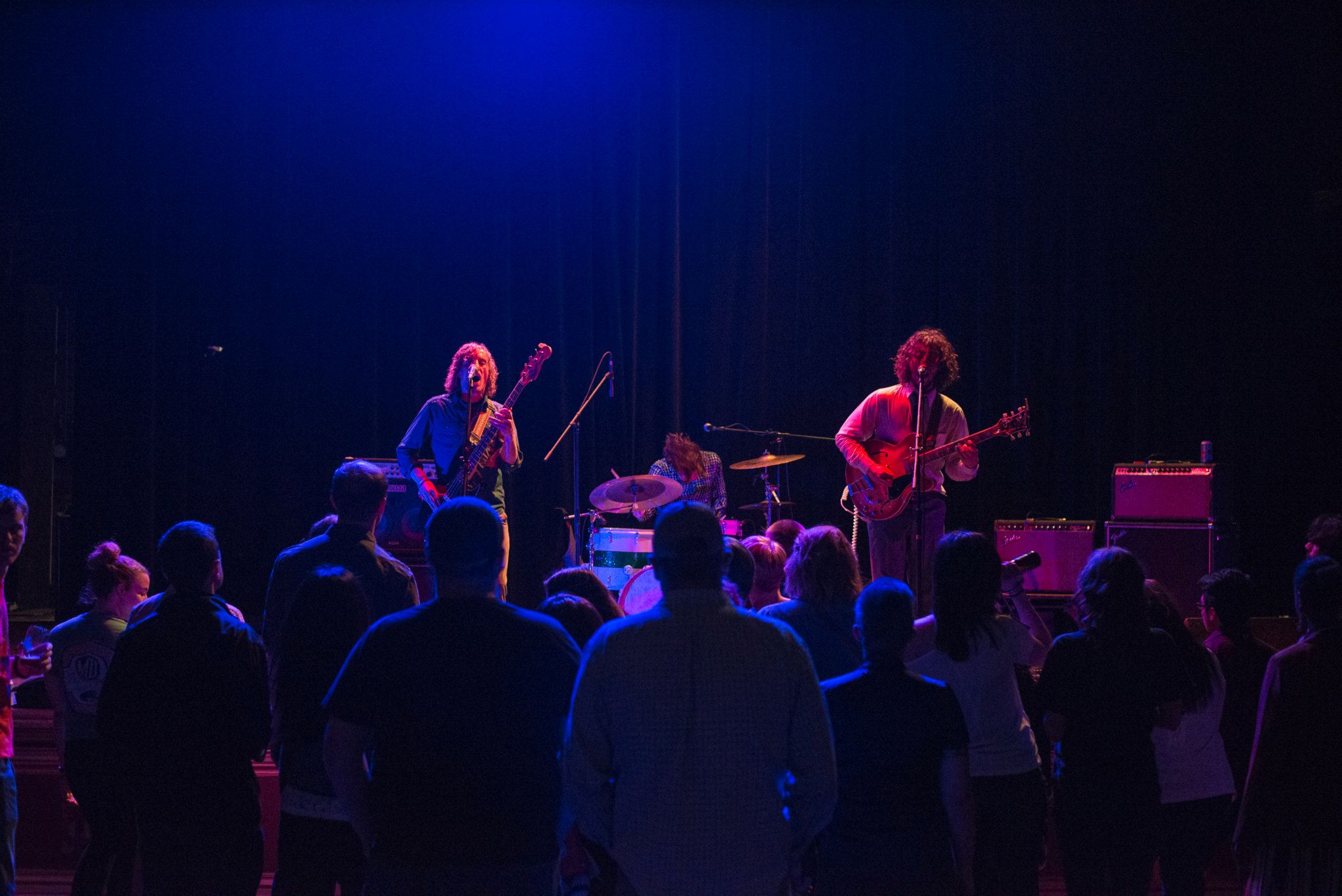
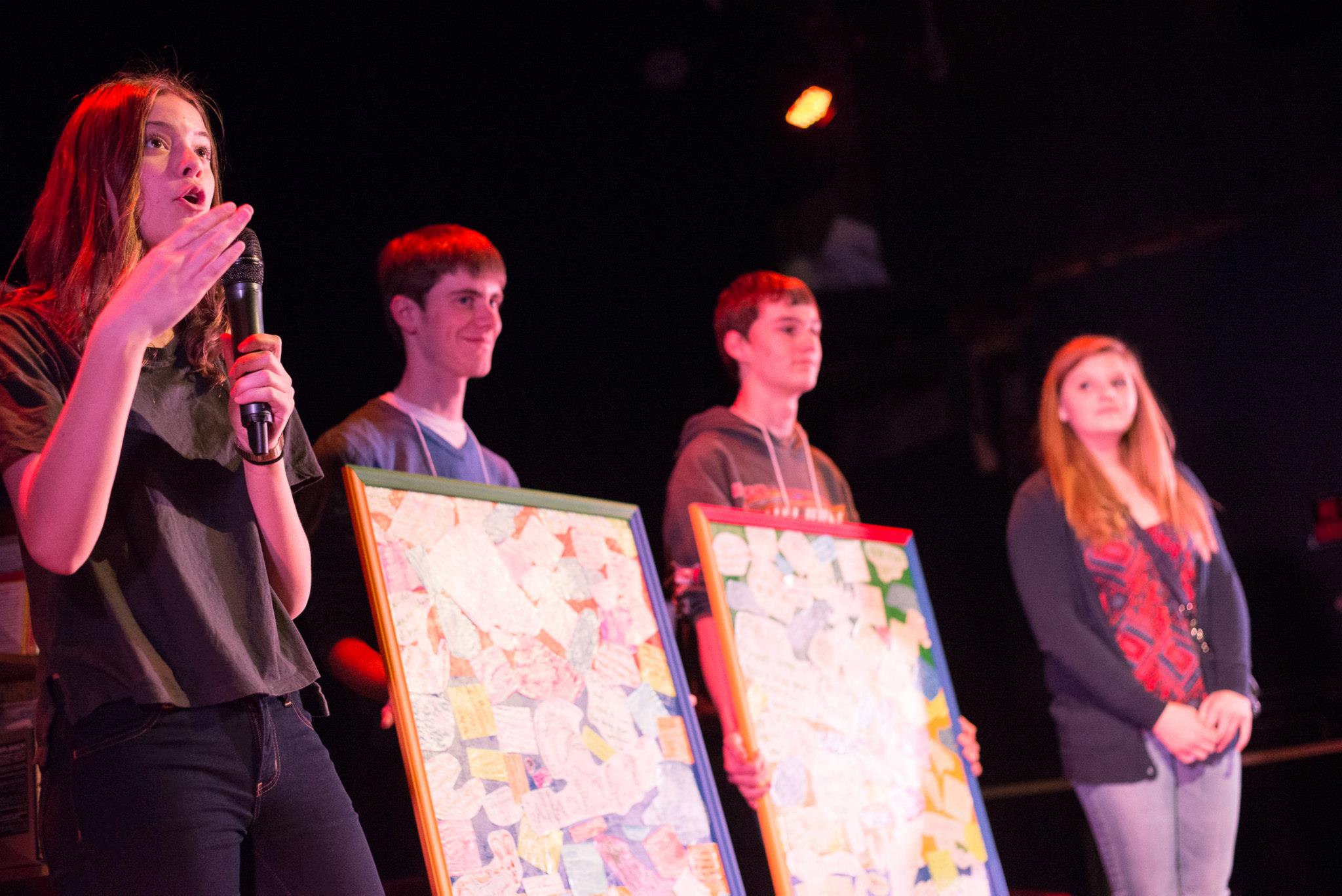
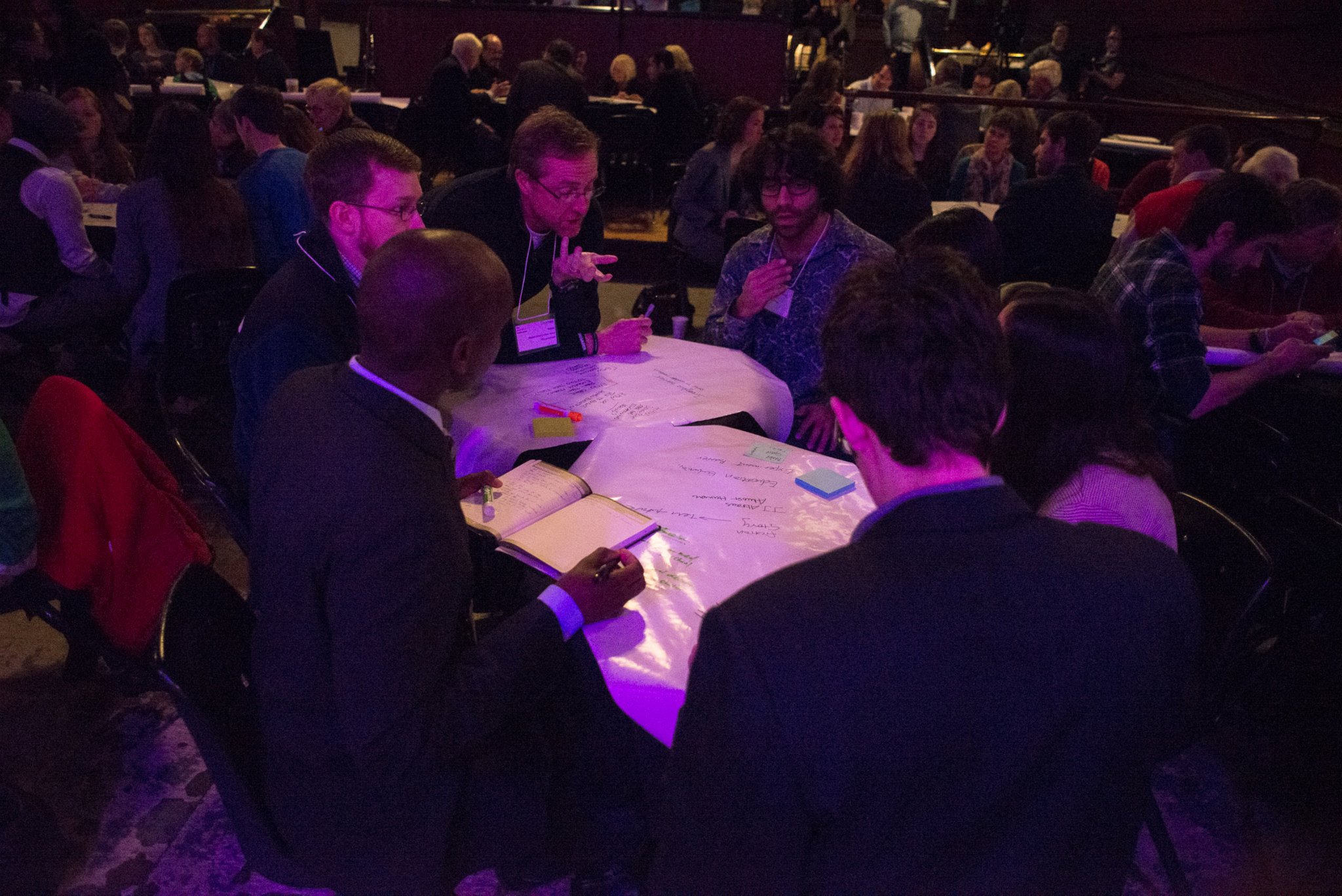


My role
Cofounder & Chief Curiosity CuratorI ensured we put on high-quality events. That means:
- Creative lead
- Designer
- Event organizer
- Web developer
- Video producer
- And manager of interns, speakers, and attendee relations
I cofounded What If…? with Matt Murrie, splitting the company 50–50. Each of us were cofounders and Chief Curiosity Curators (a brand appropriate name for co-CEO). As our roles developed, Matt focused on external dealings (partnerships, contacts, and networking) while I focused on internal machinations. We both developed and improved on our processes over the years.
What If…? began as a conversation between Matt and myself. We talked about apathy in the classroom and a lack of curiosity in the world. I was then a college student and he an English professor, both of us at Westminster College. We quickly founded our company and grew beyond the walls of our old institution.
The What If…? process
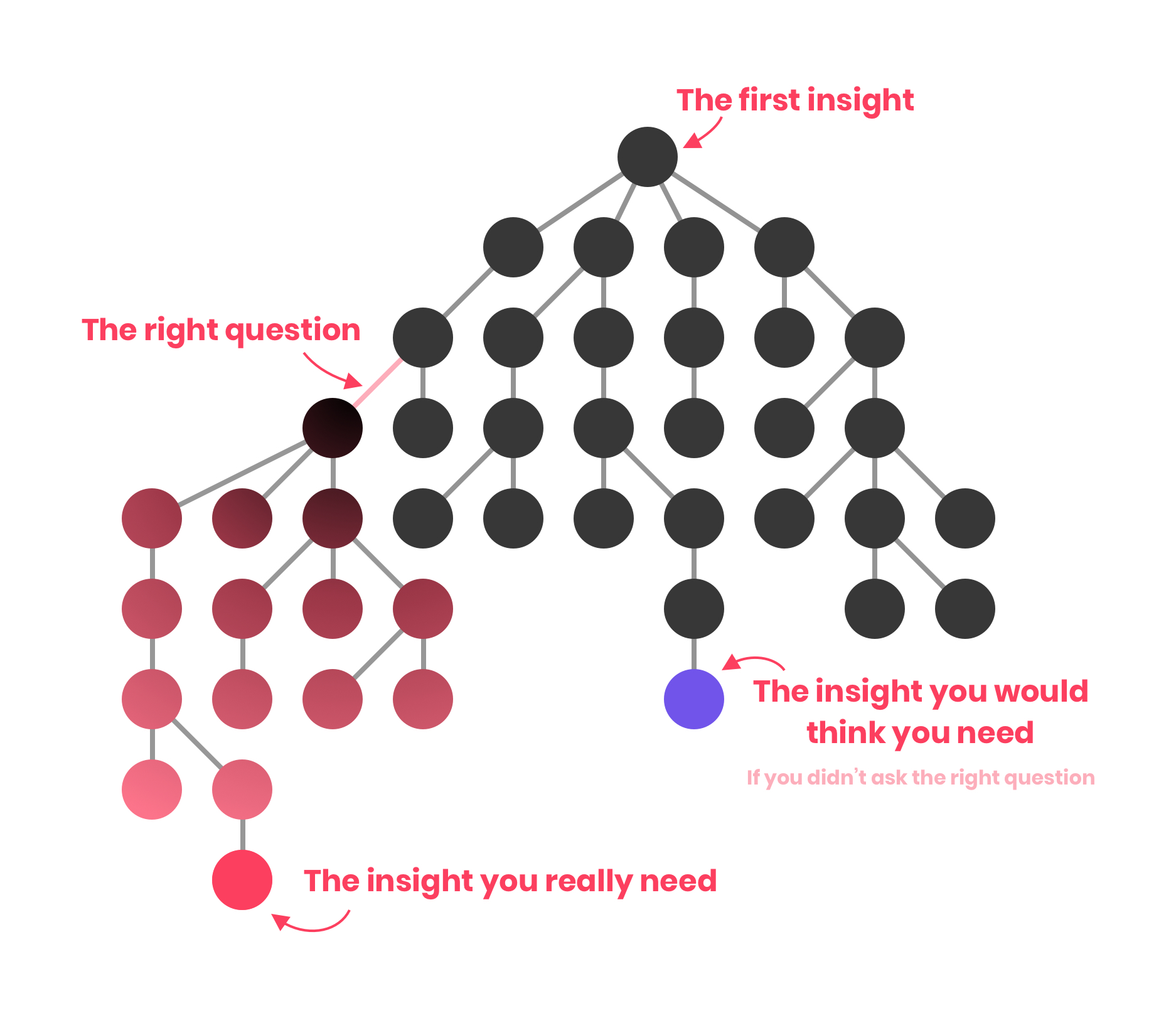
We believe that asking the right question is the path to change.
Matt and I are from liberal arts backgrounds, so we strongly believe that better questions and answers come from a wide exploration. That means perspectives from different kinds of people, disciplines, and industries.
We took on many projects that look different, but the core of What If…? is like water. Each project we take on is like a new container to mold that core. The water is always the same, but the shape changes to fit the needs of the project.
Principles of What If…?

Active curiosity
Inspiring curiosity isn’t enough. We inspired active curiosity: get curious then go out and do something about your curiosity. We encouraged participants to change their communities, construct their ideas, and sketch out the future.

Truly interdisciplinary
We create the most robust solutions when we merge insights from disparate locations. Matt and I actively recruited diverse speakers and participants. We believe there can be fruitful conversations between engineers, high school students, mechanics, authors, PhDs, designers, entrepreneurs, and everyone else.

Democratizing question-asking
In expert–novice environments, novices shy away from asking questions. At our events or in our book, we flatten this hierarchy to encourage questions from everyone. By recognizing and respecting the abilities of both experts and novices, the two can have a more balanced and engaging conversation. Experts can see things from a new perspective. Novices can learn something new.

Everything can be questioned
We allow anyone to ask a question about anything. All social institutions and technologies are built by people who asked their own questions. We encouraged participants to question it all — as long as they were diligent in their question asking methodology. No one is interested in vapid questions, but our audiences love insightful explorations of intriguing questions.
Conferences
Our annual conference & workshopHighlight reel from my last conference.
The What If…? Conference was an interdisciplinary gathering, where speakers take eight minutes to explore a “What If…?” question. The presenters and off-stage presenters (audiences) were filled with students, professors, entrepreneurs, CEOs, retirees, auto mechanics, engineers, artists, poets, and community members — all asking questions, exploring possibilities, and getting the motivation to go out and create something new.
Each conference consisted of:
- Sets of eight minute, question-led presentations
- Guided conversation groups between sets of presentations
- An environment that encouraged active curiosity though art, installations, and hidden activities
- A smaller, facilitated workshop that directly teaches participants thinking processes
We helped people solve problems by asking better, more foundational questions.

Our 02014 venue was a concert hall. It was pretty great.
We were honored to be sponsored by Quirky; littleBits; Schlafly Beer; the Regional Economic Development Inc. for Columbia, MO; the SociaLIGHT Conference; Callaway Bank; Columbia Business Times; and others.
The Book of What If…?
Questions & activities for curious minds


The Book of What If…?: Questions and Activities for Curious Minds uses What If…? questions to help kids engage with complex topics: alternative histories, justice, philosophy, gene modification, death, identity, neuroscience, and so on. For example:
- “What if the future never comes?”
considers technological determinism (p 39) - “What if you could be young forever?”
is about life extension and death (p 50) - “What if people didn't know anything?”
talks about belief justification (p 63) - “What if there was no you?”
looks at identity (p 82) - “What if you could move objects with your brain?”
explores brain-computer interfaces (p 95) - “What if you had a box that could make anything?”
talks about 3D printers (p 106) - “What if robots looked like people or animals?”
considers our robotic future (p 113) - “What if awesome didn't exist?”
gets into LGBTQ rights (p 123) - “What if computers were conscious?”
talks about artificial intelligence (p 138) - “What if you gave your pet a new ability”
considers gene modification (p 166)
Each entry starts by exploring the question and helping our reader (8–12 year olds) understand a few foundational facts. Most entries also have an activity for kids to delve deeper into the question. Some entries have peer-interviews with other kids; expert interviews with the likes of David Eagleman, Amber Case, and Aubrey de Grey; and profiles on historic individuals.
Amazon: The Book of What If…?: Questions and Activities for Curious Minds >
My book came out in 2016. It was co-written with Matt Murrie and published by Aladdin / Beyond Words (an imprint of Simon & Schuster).
Other projects
Workshops, independent conferences, and an almost MakerSpaceFacilitated workshops
On occasion, Matt and I facilitated workshops for groups of kids and sometimes adults. These were smaller, customized versions of our conference flow. Each workshop pushed participants through a question-asking process and they always culminated in some form of sharing, usually a short stand up.
Independent conferences
We helped communities facilitate their own conferences, allowing others to ask their own questions and to let us try out new ideas before our big conference. We worked with independent organizers to understand our materials and processes. During my time, I helped others facilitate their own conferences in St. Louis, Philadelphia, and a few at high-schools in Columbia, MO.
The (almost) What If…? MakerSpace
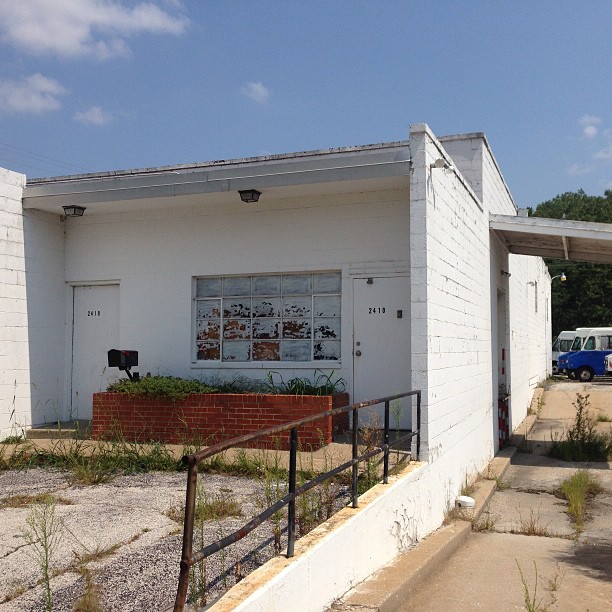
One of the buildings we were considering transforming into a makerspace.

Brainstorming during a Startup Weekend.
Our conference brings together people from different backgrounds to participate in (mostly intangible) active curiosity. We realized we could transfer our learnings and processes into a tangible, community-focused makerspace where people could explore physical questions.
(If you’re not familiar, a makerspace is a place for makers, creatives, hackers, and hobbyists. It has expensive tools you might not find in your garage and classes to teach you how to use those tools. In my research, most of these spaces were filled with older, white, male engineers. We aimed to make a more diverse space, as our project inherited the diversity from our conference.)
Over the course of a few months, we explored properties, financing (loans + Indiegogo), and new team members. The project ultimately fell through when one of our new members left the project. The conference was our primary priority, and with limited resources, we couldn’t continue to sustain the MakerSpace work. RIP.